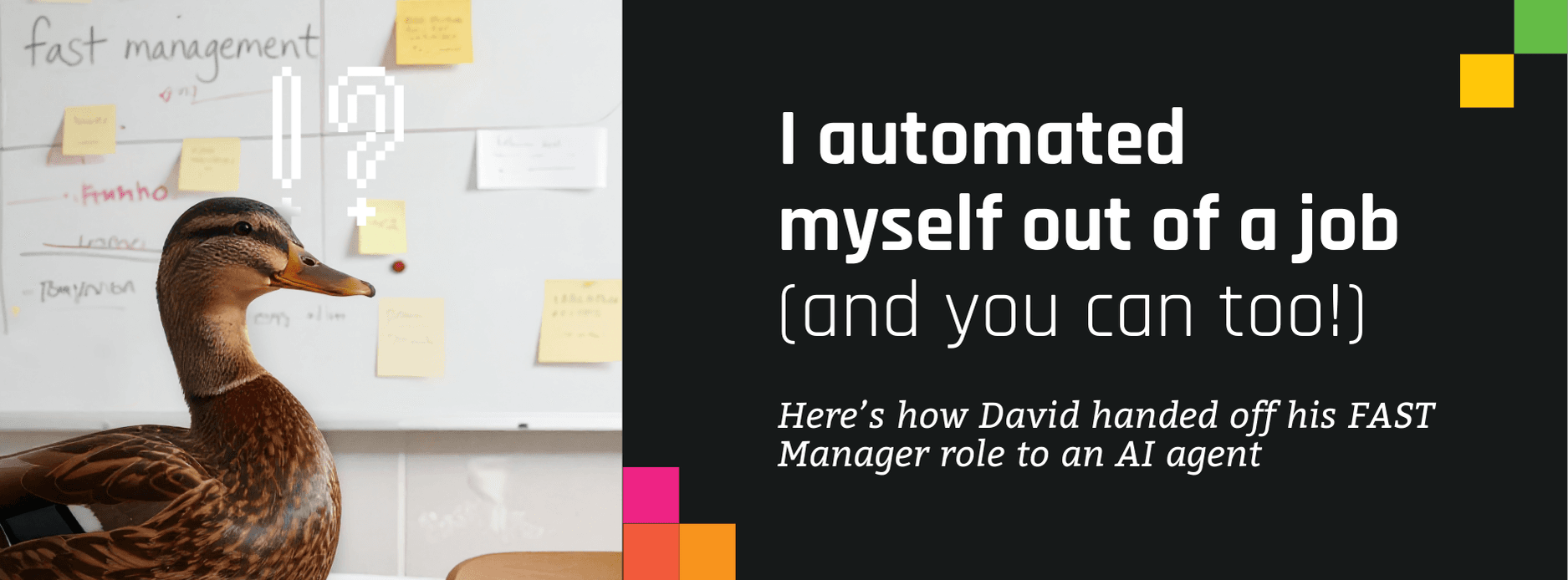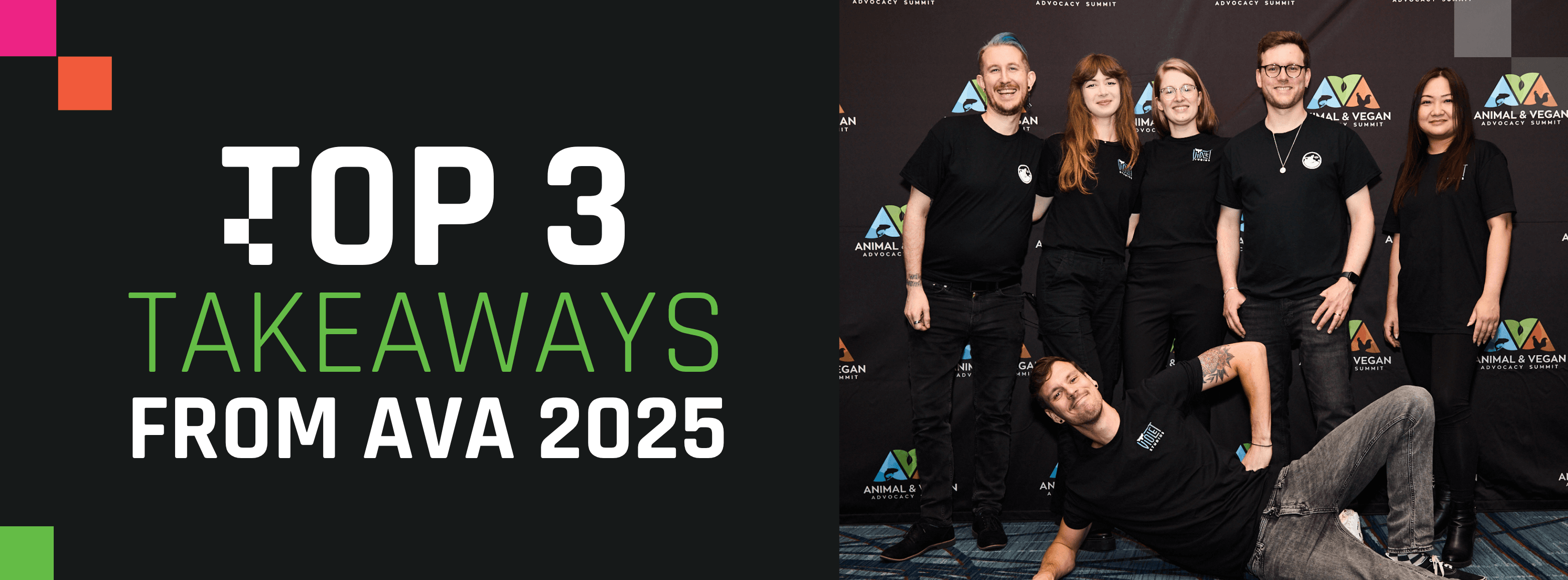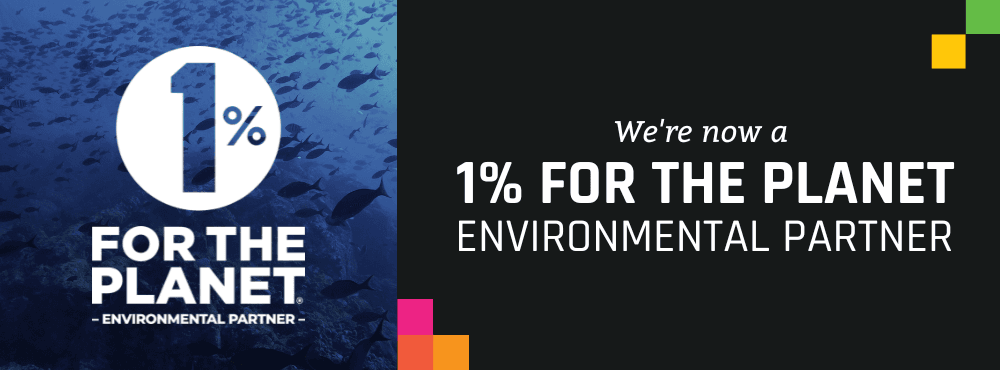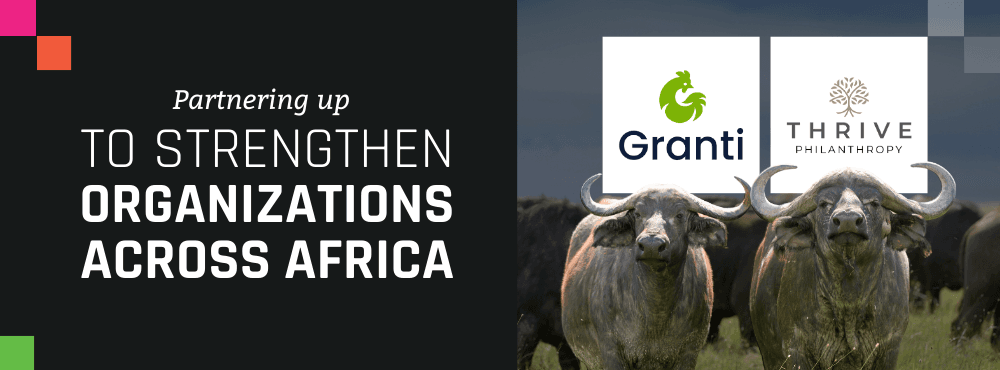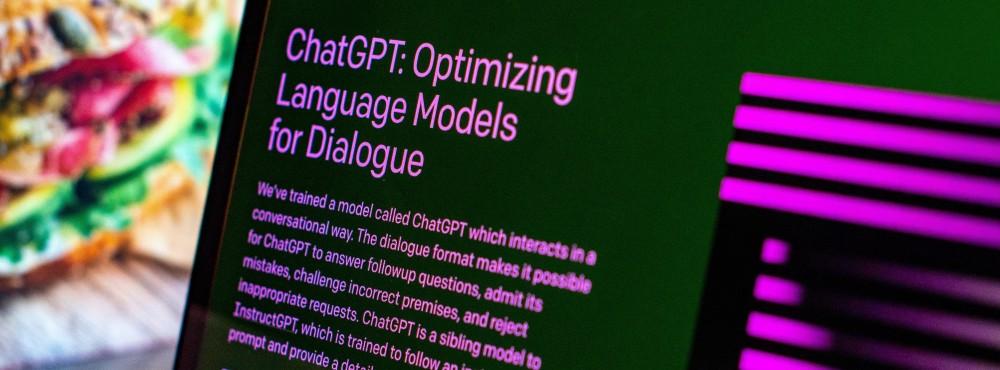
Transforming Animal Advocacy with ChatGPT
At this point, you’ve probably heard of ChatGPT. It's nearly impossible to scroll through the news without encountering some new mention of ChatGPT’s possibilities or perils. With its advanced language capabilities and human-like responses, the AI chatbot from OpenAI (whose CEO Sam Altman has headed Y Combinator and Reddit) has captivated the attention of tech enthusiasts, businesses, and the general public alike; but as with any game-changing technology, revolutionary opportunities come with equally great risks.
I haven't seen a dedicated article yet about the opportunities and risks that ChatGPT and similar technologies pose for our work in animal advocacy, so I thought I would kick things off with an overview and some demonstrations. I hope to provide a brief education into the flexibility and power of ChatGPT, and some of the implications for our work and wider society now that it is widely available.
In short, you ask ChatGPT a question or give it a prompt, and it gives you a response. The prompt can ask for pretty much anything: facts, quotes, ideas, instructions, code, written pieces about anything and in any style or format (email, social media, research, etc.), lifestyle suggestions (in the form of recipes and workout plans), and organizational strategies to name a few possibilities. ChatGPT is freely available online for anyone to use and just requires typing in a prompt to get a response in seconds. Signing up for an account and playing around with it is one of the best ways to understand the power (and limitations) of the tool.
Importantly, ChatGPT's responses are not guaranteed to be accurate or free from bias, although OpenAI says that it is working hard on these problems. But the responses may occasionally be partially or totally inaccurate or biased while sounding matter-of-factly correct. There is now an API (application programming interface) for ChatGPT, which means that it can be integrated into any mobile or web applications and deliver its services for various products.
First, we’ll let ChatGPT itself come up with a list of ways that it could be useful for animal advocacy work, and then we’ll ask how it might be harmful to our work. Below are the prompts that I gave to ChatGPT along with the full responses.
![[Blog] Calf and mother](/_next/image?url=https%3A%2F%2Fimages.ctfassets.net%2Fa0em3uo7cuue%2F2xakkgsbw613Irz91TVjy7%2Feb2723b7c19342f69e8d80bf22760cac%2Fcalf_and_mother.png&w=3840&q=75)
Helping animal advocacy work
Prompt:
Write an email to subscribers of a newsletter about the potential of using ChatGPT for animal advocacy work, including a number of use cases as examples.
ChatGPT:
Subject: Introducing ChatGPT - A Potential Tool for Animal Advocacy Work
I am excited to share with you an emerging technology that has the potential to revolutionize animal advocacy work - ChatGPT. ChatGPT is a language model developed by OpenAI that can generate human-like responses to natural language queries. It has been trained on a massive amount of text data and can understand and respond to a wide range of topics.
With ChatGPT's capabilities, there are several potential use cases for animal advocacy work that I would like to highlight:
1. Chatbot for answering FAQs: One potential application of ChatGPT is to develop a chatbot that can answer frequently asked questions about animal farming, factory farming, and animal welfare. This chatbot could be integrated into animal advocacy organizations' websites or social media platforms to provide quick and accurate information to people interested in these topics.
2. Content generation: ChatGPT can also be used to generate high-quality content on animal advocacy topics. It can generate blog posts, social media posts, and even news articles on animal welfare issues. This can save time and resources for animal advocacy organizations, allowing them to focus on other critical tasks.
3. Support for legislative and policy work: ChatGPT can be used to analyze and summarize legislative and policy documents related to animal welfare issues. This can help advocacy organizations to quickly identify key provisions in bills and regulations and develop effective strategies for lobbying and advocacy.
4. Social media monitoring: ChatGPT can monitor social media platforms for mentions of animal welfare issues and provide real-time insights into public sentiment. This can help animal advocacy organizations to develop targeted and effective social media campaigns that resonate with their audiences.
5. Chat support for fundraising: ChatGPT can be used to provide personalized support to potential donors interested in supporting animal advocacy organizations. It can answer questions about the organization's work, its impact, and the best ways to contribute.
These are just a few examples of how ChatGPT can be used for animal advocacy work. With its natural language processing capabilities, it has the potential to streamline many tasks and free up resources for more critical work.
If you are interested in exploring the potential of ChatGPT for your organization, please let me know. I would be happy to connect you with experts who can provide further guidance.
Thank you for your attention, and I look forward to hearing your thoughts on this exciting technology.
Best regards,
[Your name]
![[Blog] Calf Animal Advocacy ChatGPT](/_next/image?url=https%3A%2F%2Fimages.ctfassets.net%2Fa0em3uo7cuue%2FafvnjT8nKNO305IpLIipz%2F990667ec15846b1b0386857b39c7e352%2Fcalf.jpg&w=3840&q=75)
Harming or undermining animal advocacy work
Prompt:
How could ChatGPT be harmful to animal advocacy work, or be used against it?
ChatGPT:
While ChatGPT has many potential benefits for animal advocacy work, there are also some potential risks and drawbacks that should be considered. Here are a few ways that ChatGPT could be harmful to animal advocacy work:
1. Misinformation: As with any technology, ChatGPT is only as accurate as the data it has been trained on. If it has been trained on biased or inaccurate data, it may generate responses that perpetuate misinformation or harmful stereotypes. This could be especially damaging in the context of animal advocacy work, where factual accuracy is critical.
2. Over-reliance: There is a risk that animal advocacy organizations may become overly reliant on ChatGPT and other automated tools, potentially neglecting critical human oversight and judgment. For example, a chatbot may not be able to provide the same level of empathy and personal connection as a human support team, potentially leading to a loss of engagement and support from donors and supporters.
3. Privacy concerns: ChatGPT works by analyzing large amounts of text data, including user queries and responses. There may be concerns about how this data is being collected, stored, and used, and whether users' privacy is being respected.
4. Potential misuse: While ChatGPT is intended to be used for positive purposes, there is always a risk that it could be misused or abused. For example, malicious actors could use ChatGPT to generate misleading content or propaganda that could harm animal advocacy organizations or mislead the public.
5. Ethical concerns: Finally, there may be broader ethical concerns about the use of advanced AI technologies like ChatGPT. For example, some people may argue that it is unethical to use AI to generate content that mimics human speech without explicitly disclosing that it is not being generated by a human.
Overall, it's important to approach the use of ChatGPT and other AI technologies with a critical eye and a deep understanding of their limitations and potential risks. While these tools can be powerful aids to animal advocacy work, they must be used thoughtfully and with care to avoid unintended harm.
![[Blog] Lauren McConachie Piglet](/_next/image?url=https%3A%2F%2Fimages.ctfassets.net%2Fa0em3uo7cuue%2F1HPl9x25OXCIb7arJ4rOUf%2F66e8d1393d9efe251f1496f895d47c2a%2Flauren-mcconachie-piglet-unsplash.jpg&w=3840&q=75)
Examples of Uses
At this point, I will demonstrate more of ChatGPT's abilities through a series of prompts and responses so that you get an idea of its power and flexibility. Note: I'm not condoning or encouraging the use of ChatGPT for any particular purpose, but rather showing the power of what it can do so that we can be informed about this new tool that anyone online now has access to. There are probably many beneficial ChatGPT use cases for advocacy, in addition to many unethical use cases. There are also many ways this tool could be used by those promoting animal exploitation.
Below are a few sample questions I have asked ChatGPT. To avoid this post being too long, you can find all the questions and responses in this Google Doc: ChatGPT Opportunities and Risks for Animal Advocacy Work.
Prompt:
Write a tweet about ending factory farming that a Republican living in Georgia would agree with.
ChatGPT:
"Factory farming not only harms animals, but it also damages our environment and food security. As a Republican in Georgia, I believe in responsible and sustainable agriculture practices that benefit both farmers and consumers. Let's work together to end factory farming and support a healthier future for all." #EndFactoryFarming #SustainableAgriculture #GeorgiaGOP
Prompt:
Historically, in which US state has it been easiest to get citizen-initiated ballot measures passed?
ChatGPT:
Historically, the US state that has made it easiest to get citizen-initiated ballot measures passed is Oregon. The state has a long-standing tradition of ballot measures and has one of the lowest signature requirements in the country. In Oregon, the number of signatures required for an initiative petition is equal to 8% of the votes cast in the last gubernatorial election for a statewide initiative and 6% for a constitutional amendment. Additionally, the state has a unique system that allows for the easy editing of proposed measures and for initiatives to be proposed during any election cycle. As a result, Oregon has seen a high number of successful citizen-initiated ballot measures over the years.
Prompt:
Summarize this article for me in 2-3 sentences: https://www.greenqueen.com.hk/beyond-meat-turns-a-financial-corner-promises-lower-prices-and-healthier-tastier-products-in-2023/
(Note: ChatGPT started without internet access, but it appears that internet access is being granted to certain versions of the tool. If ChatGPT does not have internet access, it may still try to write a summary based on the URL and its knowledge of articles that the website has published in the past.)
ChatGPT:
The article reports that Beyond Meat, a leading plant-based meat company, has reported strong financial results for Q4 2021, driven by growth in the US retail market and expansion into international markets. The company also announced plans to launch new and improved products in 2023, with a focus on making them healthier, tastier, and more affordable. Beyond Meat's CEO also expressed confidence in the company's long-term growth prospects, citing increasing consumer demand for plant-based protein and a growing global trend toward sustainable food systems.
![[Blog] Lamb](/_next/image?url=https%3A%2F%2Fimages.ctfassets.net%2Fa0em3uo7cuue%2FxIOC6tGzFrPGFfEVU7naY%2Ffc3550b3f90afee2e8c0642a661e050a%2Fmesh-lamb-unsplash.jpg&w=3840&q=75)
The implications for animal rights advocates could be significant. ChatGPT could be used to automate certain tasks such as answering FAQs, providing information about animal welfare issues, summarizing articles or even creating targeted social media content for a specific audience. ChatGPT could also be programmed to interact with individuals in a personalized and empathetic manner, which may help to engage and educate those who are new to animal rights issues. (It can even provide meal plans and recipes—sort of. When I asked for some vegan recipes for someone with a soy allergy, it did occasionally give me tofu and tempeh dishes. Not ideal.)
However, there are also potential downsides to using ChatGPT for animal advocacy, including most of the ethical dilemmas that others are discussing surrounding its usage such as bias, misinformation, and potential for creating a large volume of content that pretends to be written by humans (which we shouldn’t do as advocates). It is also unclear whether it will be able to convey the emotional impact of animal cruelty in the same way that a human advocate can. ChatGPT is also only as good as the information it is fed, meaning there is a risk of using it for spreading false or misleading information about animal welfare issues. If we assume that most of the content on the Internet wasn’t created from an animal rights point of view—a decent assumption, I think—then it could mean that most of the content generated by ChatGPT and other language generation tools might have a speciesist bias.
More widely, tech companies are locked in an AI arms race to develop and deploy ever more powerful AI-based text generation tools such as Google Bard, DeepMind Sparrow, Microsoft Bing AI. While not even the creators of these systems can fully understand, predict, or control them, they still have the potential to deeply transform our societies. Artificial intelligence is now becoming human-competitive at general tasks, and there is an argument that we should be treading a lot more carefully—for example, some are calling for a moratorium on AI development until proper oversight is put in place, and the U.S. Commerce Department is now seeking input on audits and assessments required to make AI systems “legal, effective, ethical, safe, and otherwise trustworthy.”
Regardless of our personal feelings about and engagement with ChatGPT and other forms of AI, it is important to recognize its potential impact on our work and animal advocacy as a whole. While there are broader demands for transparency and control of these new powerful AI-based tools, right now we all have to decide how we will use them, whether as a force for good or as a force for harm.
Hopefully this gives you a glimmer of what that might mean for all of us.

Steven Rouk is the founder of Connect For Animals, a platform for everyone who wants to help end factory farming, and has been involved with animal advocacy through data analysis, strategy, community building, and grassroots activism. Steven enjoys writing about philosophy and ethics, reading nonfiction, and running.

Steven Rouk is the founder of Connect For Animals, a platform for everyone who wants to help end factory farming, and has been involved with animal advocacy through data analysis, strategy, community building, and grassroots activism. Steven enjoys writing about philosophy and ethics, reading nonfiction, and running.

